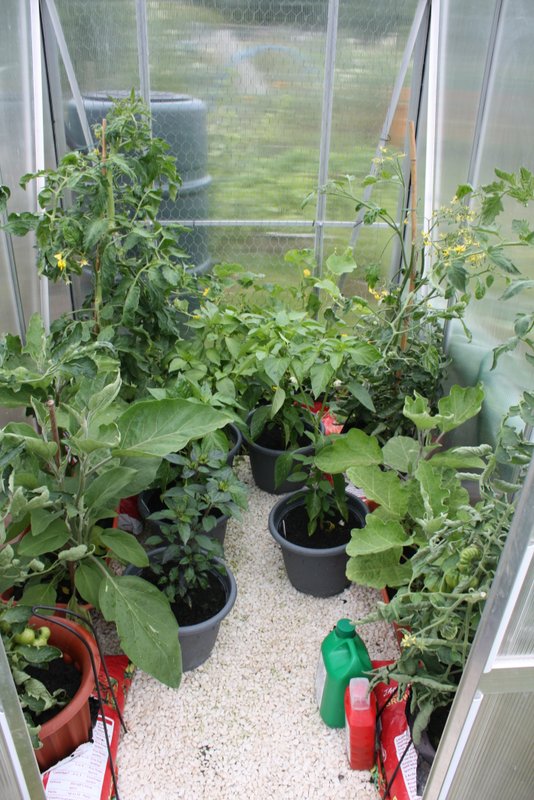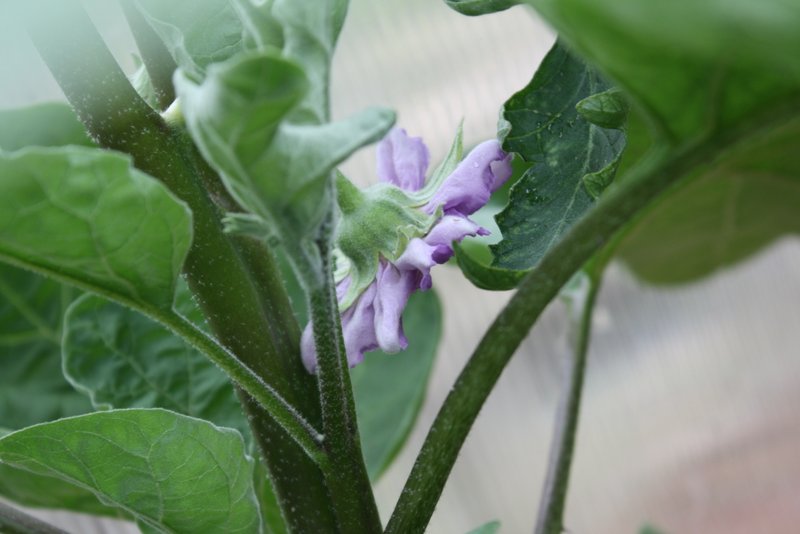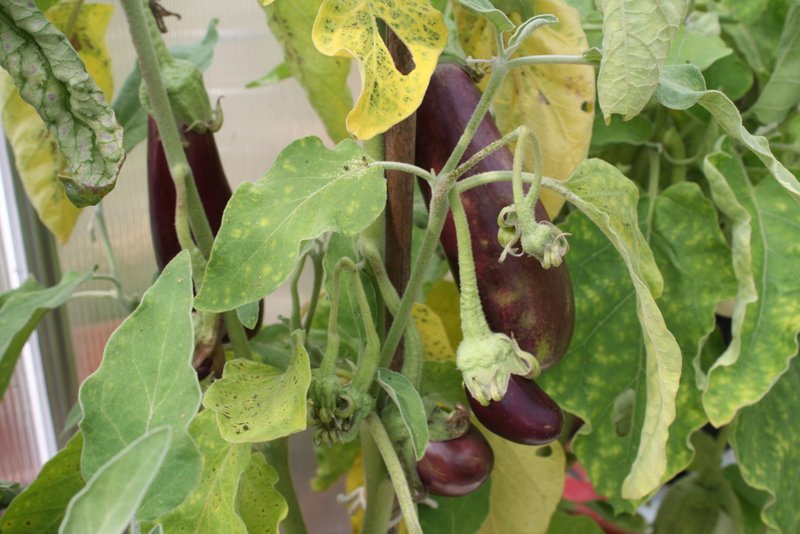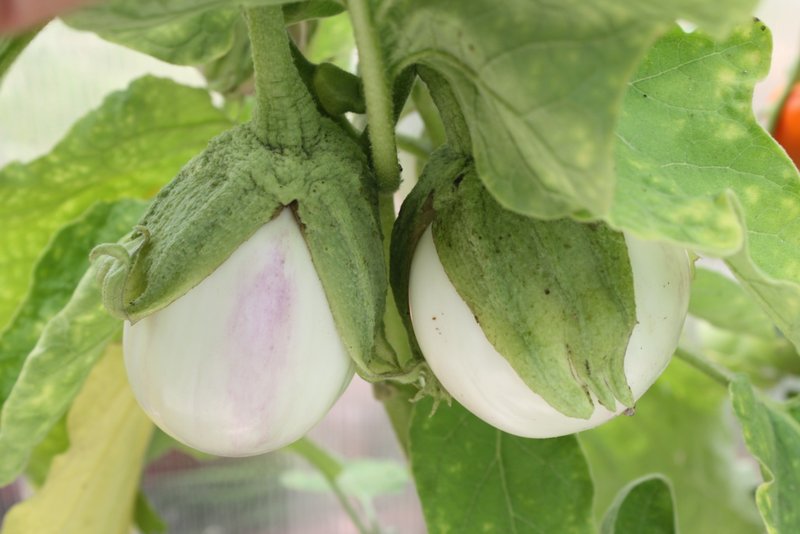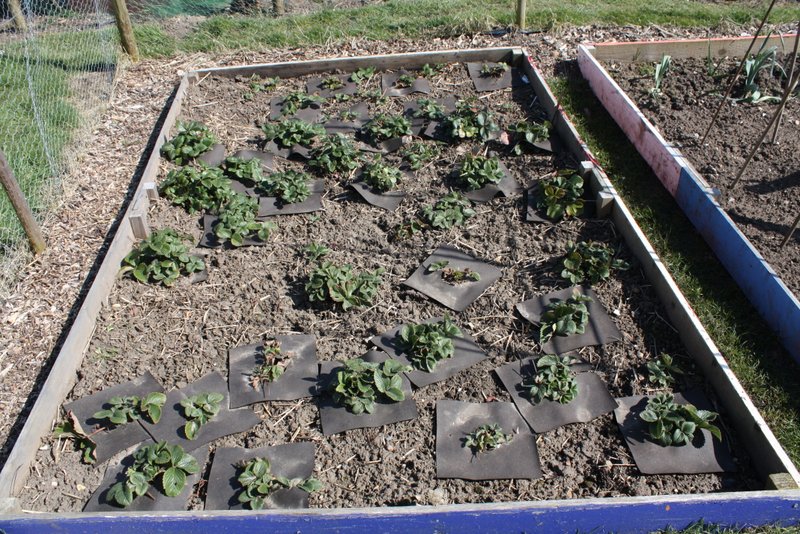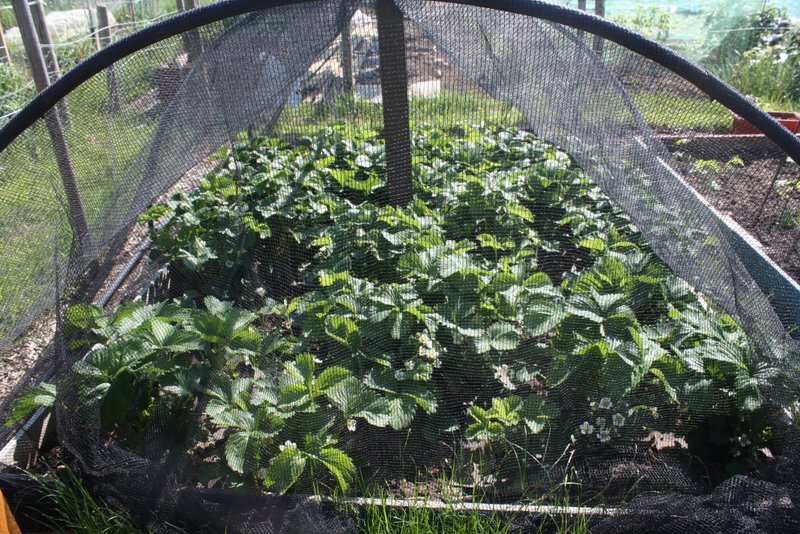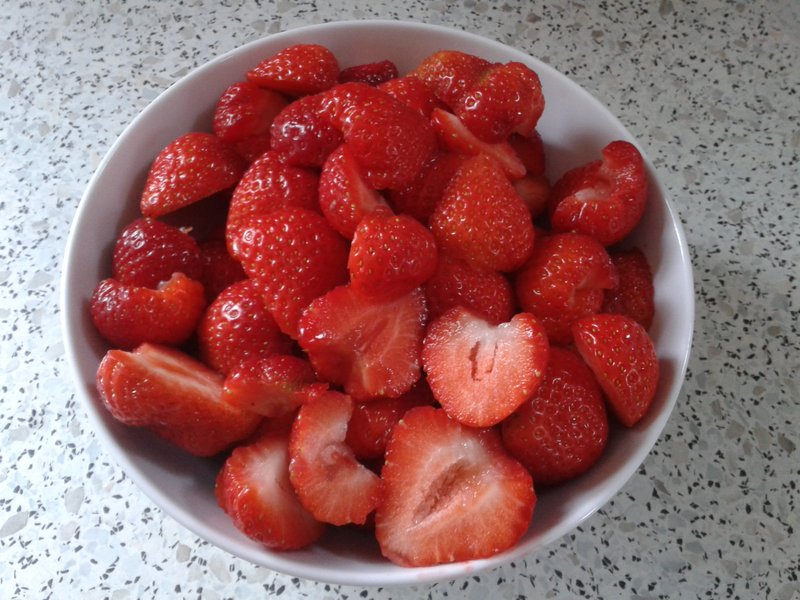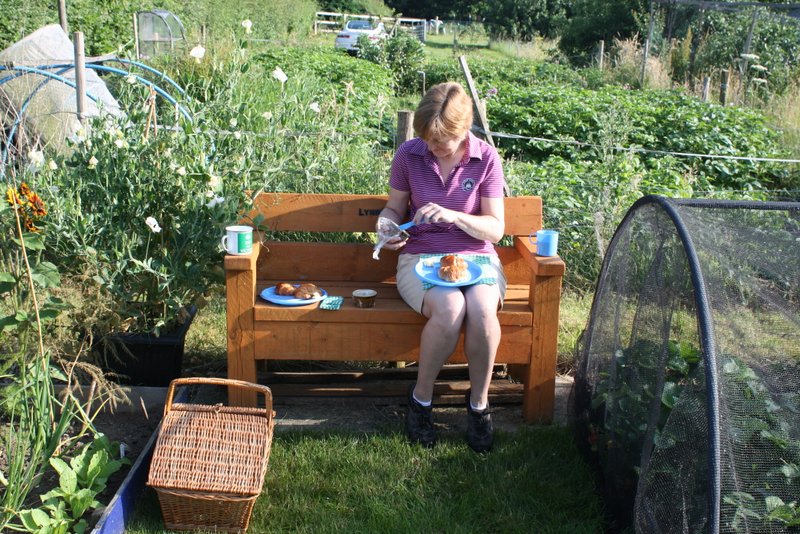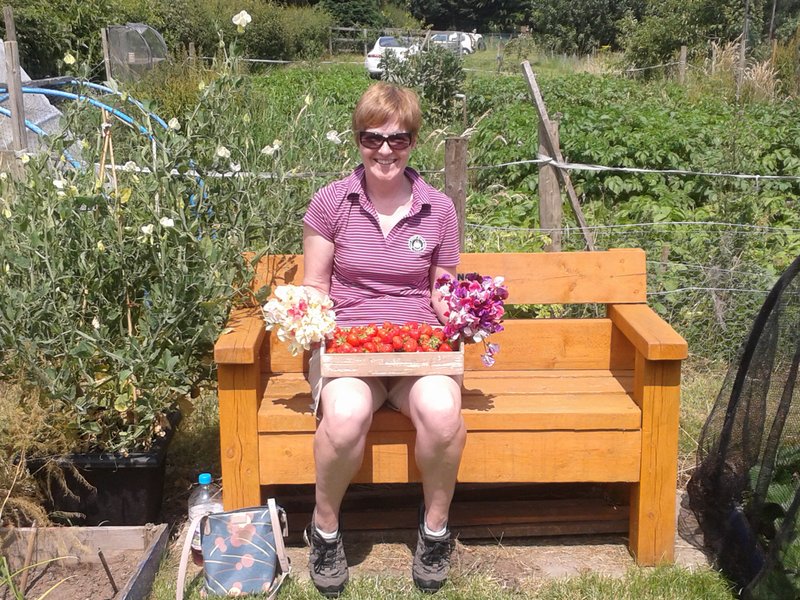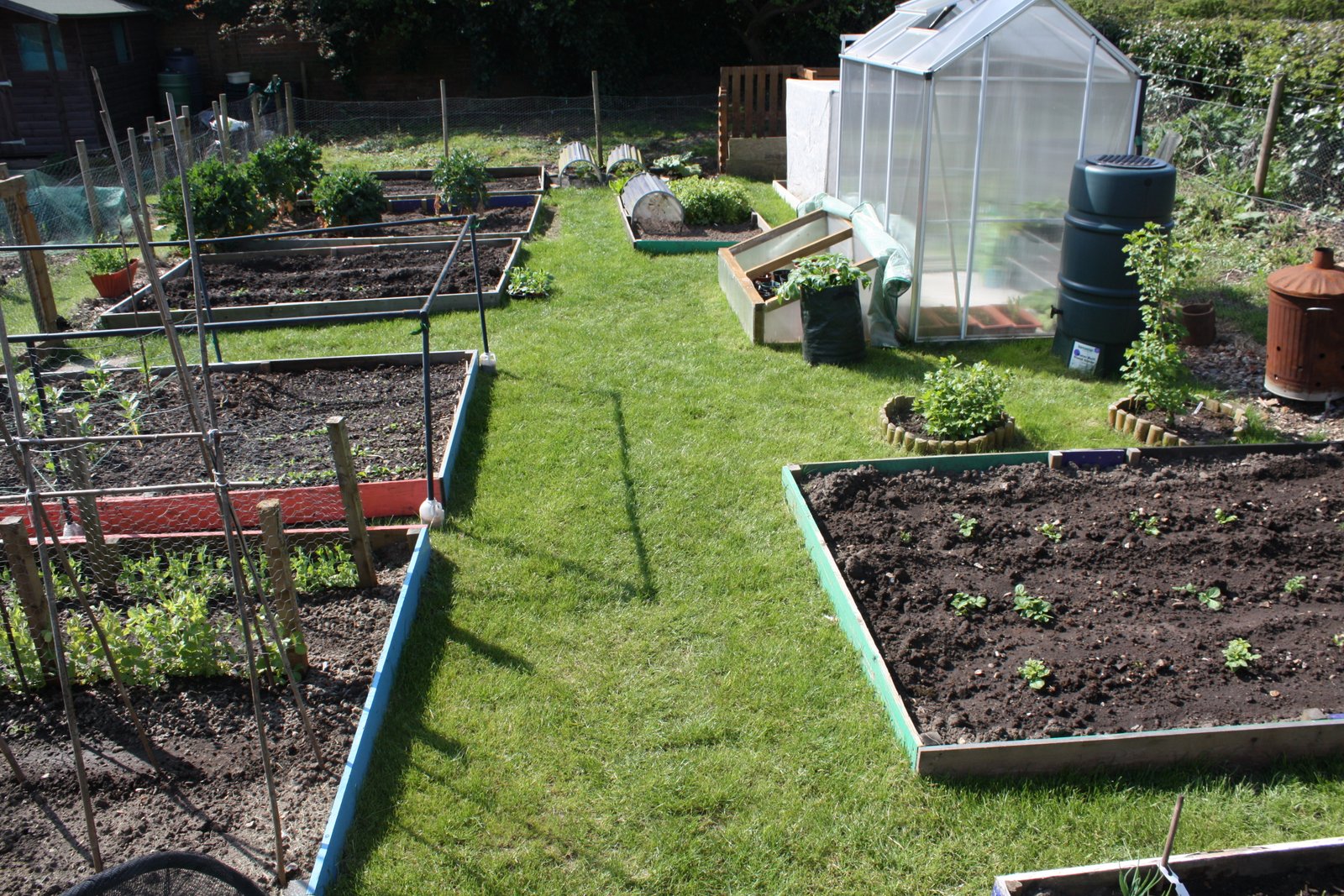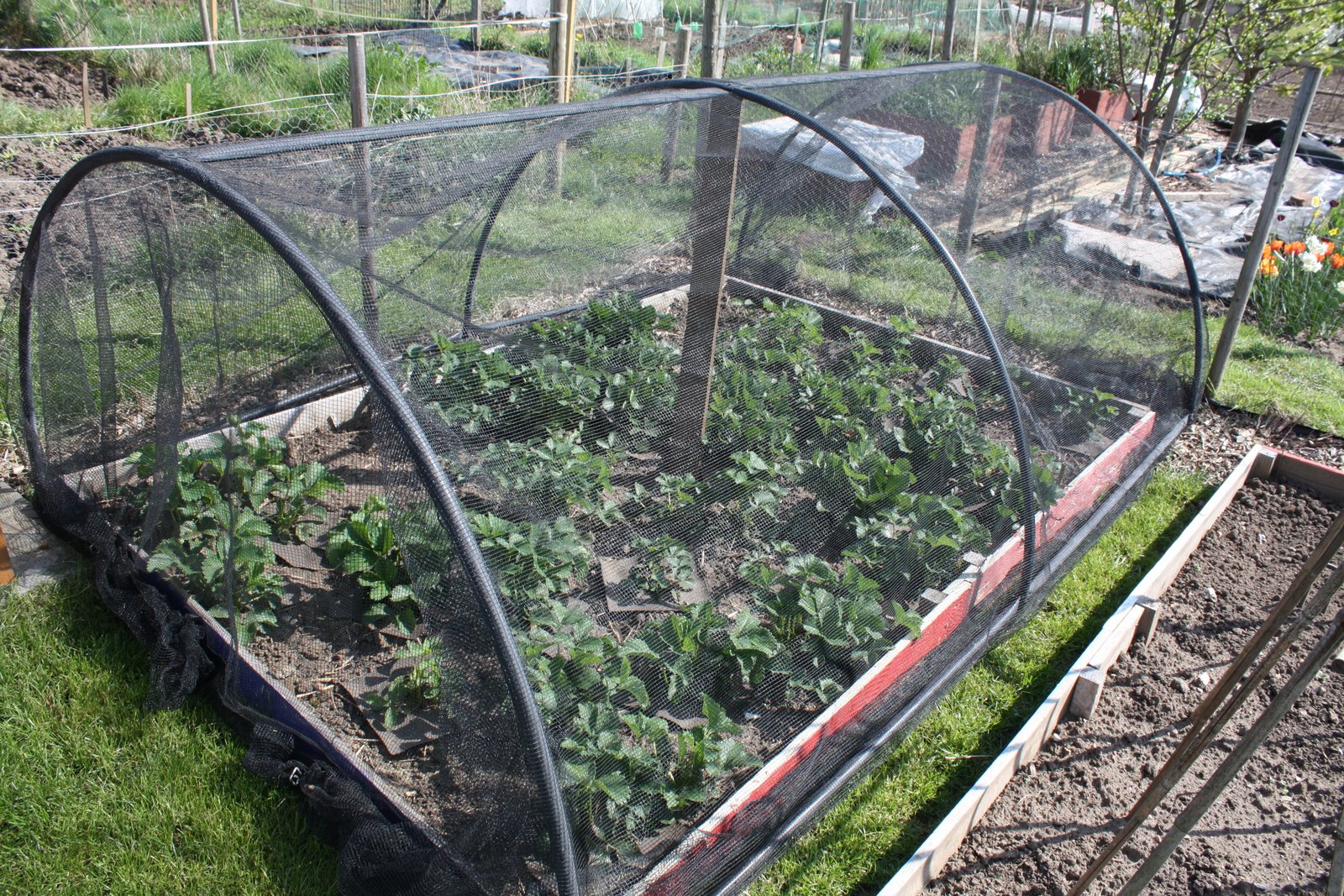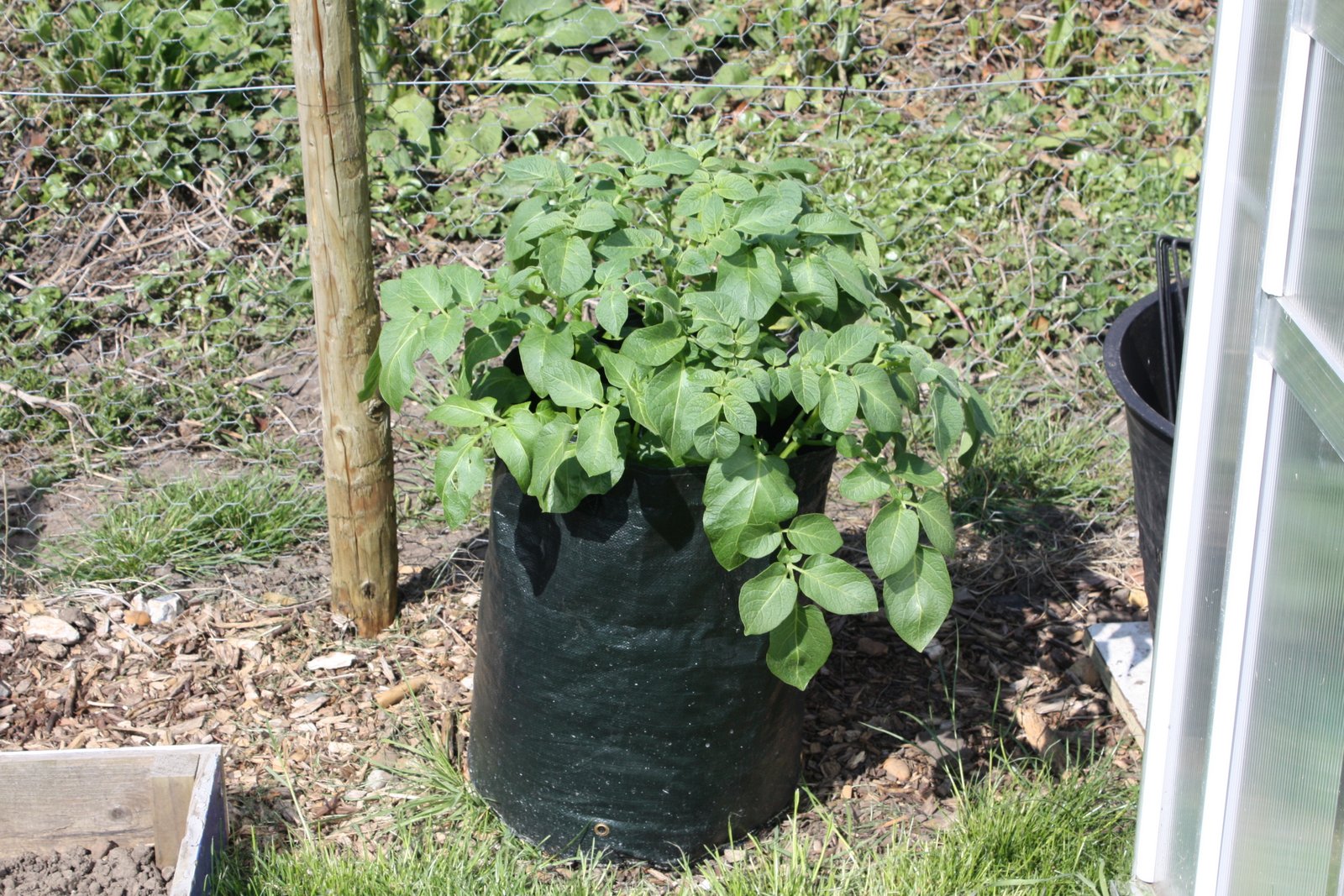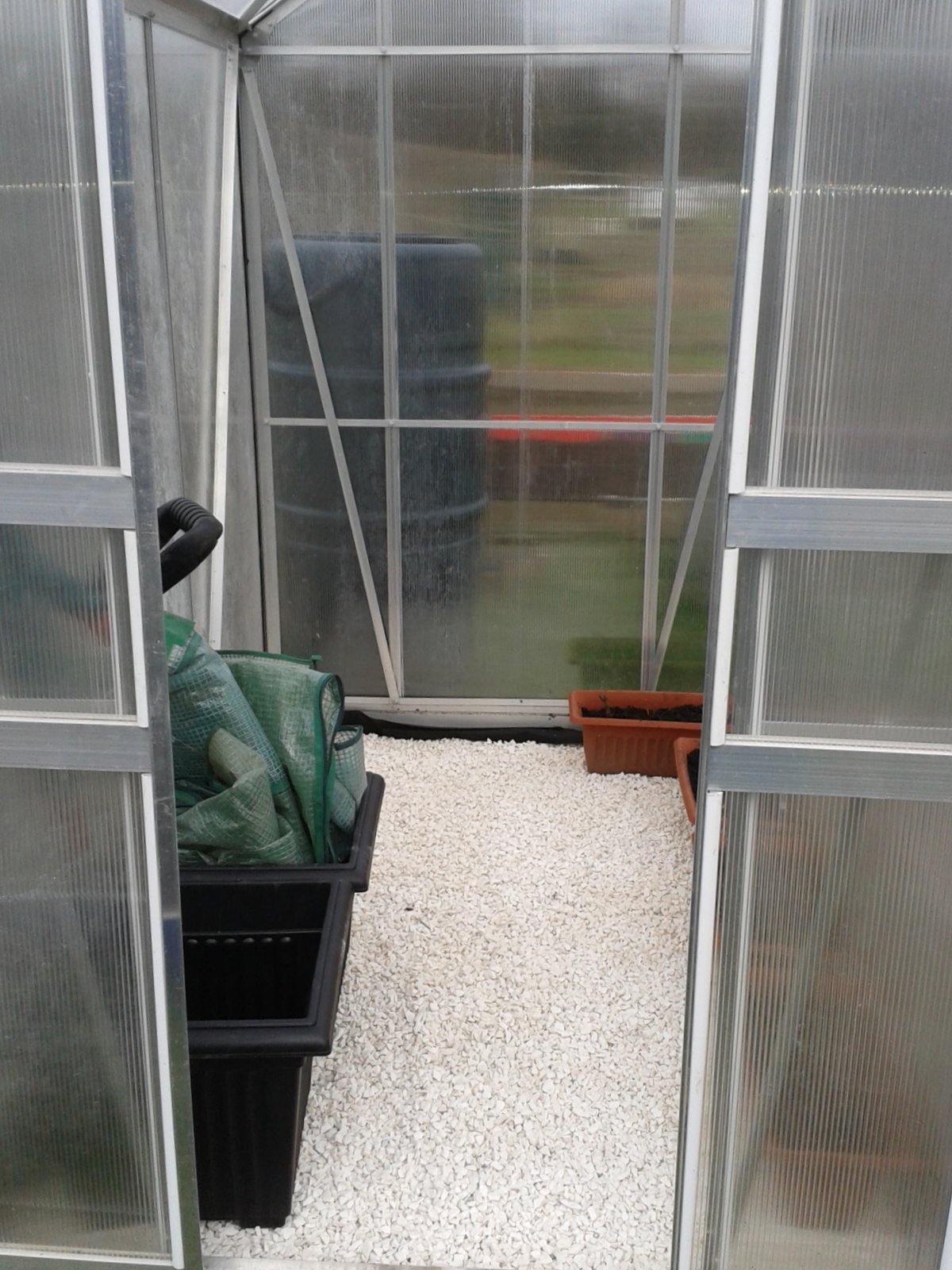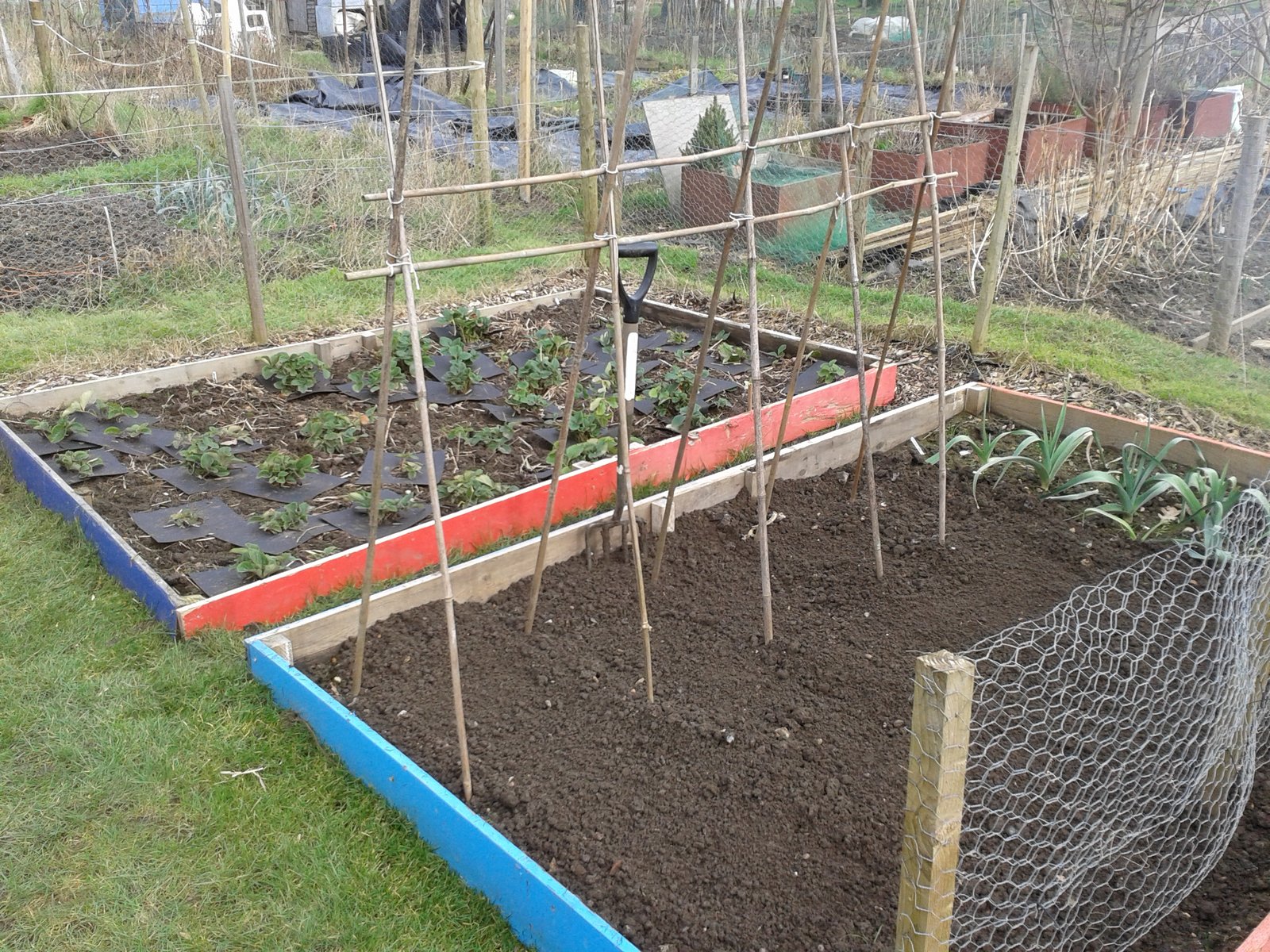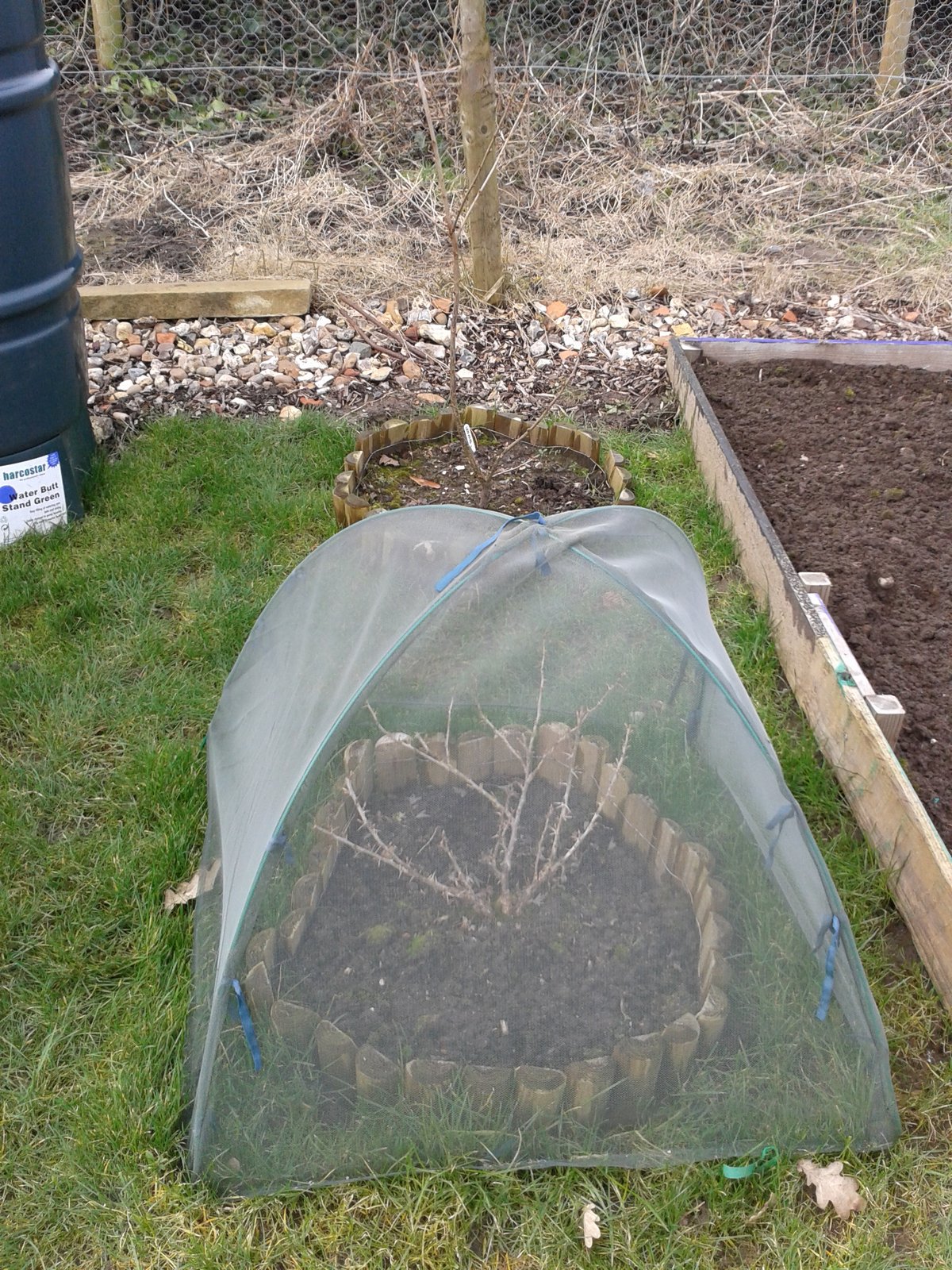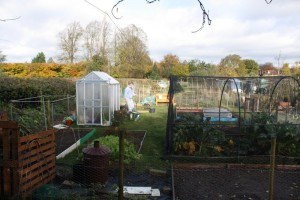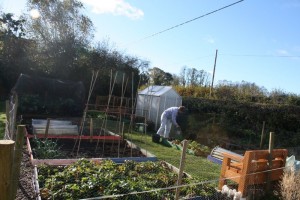An annual challenge is the growing of aubergines. Two crumby summers with very low light levels has meant very little success over the past couple of years. However, this year is looking more promising.
We got the seeds under way in the first week of February in a windowsill propagator and then grew them on indoors for a couple of months before moving the strongest plants to the greenhouse in late April, while bringing on the remainder on the back patio ready for planting out in containers at home.
The following pair of pictures show that by early July we had quite sturdy plants, producing healthy flowers.
With the peppers moved outside in July there was plenty of space for the tomatoes and aubergines to develop and we are now seeing the fruits of our labours.
The pale aubergines below are Rosa Bianca. As well as looking very attractive on the plant, they cook well and are definitely a cultivar worth trying.

